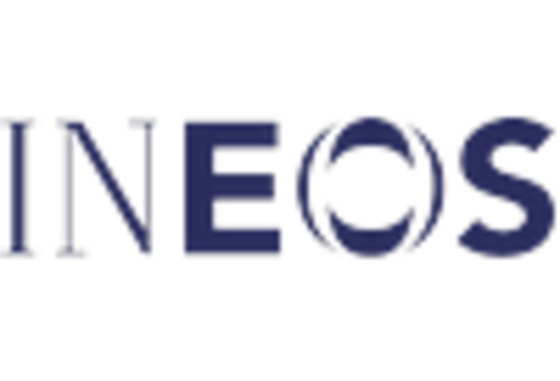Market Trends
Key Emerging Trends in the Polyalkylene Glycol Market
The Polyalkylene Glycol Market is experiencing notable trends and developments that are shaping its trajectory:
Rising Demand in Automotive Sector: There is a growing demand for polyalkylene glycols, particularly polyethylene glycol (PEG) and polypropylene glycol (PPG), in the automotive sector. These compounds are used as lubricants, coolants, and hydraulic fluids, contributing to improved vehicle performance and efficiency.
Expansion in Construction Industry: The construction industry is a significant consumer of polyalkylene glycols, primarily in the form of polyethylene glycol ethers. These compounds are utilized in various construction applications such as cement additives, grouts, and mortars due to their water-reducing and plasticizing properties.
Increasing Application in Personal Care Products: Polyalkylene glycols are widely used in the personal care and cosmetics industry as ingredients in skincare products, hair care products, and pharmaceutical formulations. Their properties, such as moisturizing, emulsifying, and solubilizing, make them valuable components in a range of cosmetic formulations.
Growing Demand in Pharmaceuticals: The pharmaceutical industry is witnessing a growing demand for polyalkylene glycols, particularly polyethylene glycols, as excipients in drug formulations. These compounds are used as solvents, carriers, and viscosity modifiers in various pharmaceutical products, contributing to their stability and efficacy.
Focus on Bio-based Polyalkylene Glycols: There is a growing trend towards the development of bio-based polyalkylene glycols derived from renewable feedstocks such as plant oils and sugars. Bio-based polyalkylene glycols offer environmental benefits, reduced carbon footprint, and compatibility with sustainable manufacturing practices, aligning with the growing demand for green alternatives.
Technological Advancements: Continuous advancements in production technologies are driving improvements in the quality and performance of polyalkylene glycols. Manufacturers are investing in research and development to enhance process efficiency, optimize product properties, and develop novel applications for polyalkylene glycols.
Expanding Industrial Applications: Polyalkylene glycols find applications across various industrial sectors such as textiles, food processing, and metalworking fluids. Their properties, including lubricity, thermal stability, and water solubility, make them suitable for a wide range of industrial processes, driving market growth.
Market Expansion in Asia-Pacific Region: The Asia-Pacific region is emerging as a key market for polyalkylene glycols, driven by rapid industrialization, urbanization, and infrastructural development. Rising demand from end-use industries such as automotive, construction, and personal care is fueling market expansion in the region.
Impact of COVID-19 Pandemic: The COVID-19 pandemic has had mixed effects on the polyalkylene glycol market. While disruptions in supply chains and manufacturing operations initially impacted market growth, the increased demand for pharmaceuticals, personal care products, and essential industrial applications has supported the market's resilience.
Stringent Regulatory Standards: Regulatory standards related to product safety, environmental impact, and biodegradability are influencing market trends in the polyalkylene glycol industry. Manufacturers are adapting to comply with regulatory requirements while maintaining product quality and performance.









Leave a Comment